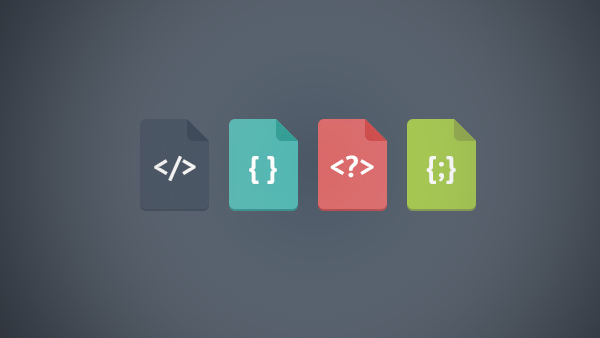优秀不够,那就要无可替代!
Python版本3.8.0,开发工具:Pycharm
上一节我们已经可以获取到网页内容,但是获取到的却是一长串的 html 代码,并不是我们想要的数据。
那这一节,我们就来看看怎么去解析这些网页,轻松的拿到我们想要的数据。
首先网页解析有很多种解析工具,包括之前的正则表达式也可以用来解析
这节我们介绍通过BeautifulSoup4 进行网页解析。
安装BeautifulSoup4
- 启动cmd
- 输入pip3 install beautifulsoup4
pip3表示Python3版本,不需要区分版本直接使用pip
安装成功后截图如下:

BeautifulSoup4 快速开始
1. 导入bs4 库
from bs4 import BeautifulSoup
2. 创建beautifulsoup对象
先创建一个demo网页
html = """
<html><head><title>The Dormouse's story</title></head>
<body>
<p class="title" name="dromouse"><b>The Dormouse's story</b></p>
<p class="story">Once upon a time there were three little sisters; and their names were
<a href="http://example.com/elsie" class="sister" id="link1"><!-- Elsie --></a>,
<a href="http://example.com/lacie" class="sister" id="link2">Lacie</a> and
<a href="http://example.com/tillie" class="sister" id="link3">Tillie</a>
and they lived at the bottom of a well.</p>
<p class="story">...</p>
</body>
</html>
"""
创建一个beautifulsoup对象
soup = BeautifulSoup(html)
或者通过读取本地HTML文件创建对象
soup = BeautifulSoup(open('demo.html'))
3. BeautifulSoup 将 HTML 文档转换成一个树形结构,每个节点都是 Python 对象,所有对象可以归纳为4种:
- Tag
- NavigableString
- BeautifulSoup
- Comment
(1)Tag
可以看做是HTML中的一个个标签,例如
<title>The Dormouse's story</title>
<b>The Dormouse's story</b>
<p class="story">Once upon a time there were three little sisters; </p>
上面的title、b、p 等 HTML 标签加上中间的内容就是一个 Tag,我们来试试如何通过 beautifulsoup 进行 Tag 内容获取
print(soup.title)
# 输出:<title>The Dormouse's story</title>
print(soup.head)
# 输出:<head><title>The Dormouse's story</title></head>
print(soup.p)
# 输出:<b>The Dormouse's story</b>
注:通过标签名只能查找到所有内容中第一个符合要求的标签
每个 tag 都有自己的 name,一个 tag 也会有多个属性 attrs 。tag 属性的操作方法和字典相同
print(soup.title.name)
# 输出:title
print(soup.p.attrs)
# 输出 {'class': ['title'], 'name':'dromouse'}
通过字典方式获取其中某一个属性
# 两种方式都可
print(soup.p.get('class'))
print(soup.p['class'])
(2)NavigableString
中文解释:可以遍历的字符串。
既然已经通过 Tag 获取到具体标签,那标签的内容就可以通过 NavigableString 拿到,使用方法特别简单:
# 获取标签内容
print(soup.p.string)
(3)BeautifulSoup
BeautifulSoup 对象表示的是一个文档的全部内容。大部分时候,可以把它当作是一个特殊的 Tag,我们可以分别获取它的名称、属性
print(soup.name)
print(soup.attrs)
(4)Comment
Comment 对象是一个特殊类型的 NavigableString 对象,输出的内容不包括注释符号。
例如:
print(soup.a)
print(soup.a.string)
输出:
<a class="sister" href="http://example.com/elsie" id="link1"><!-- Elsie --></a>
Elsie
a 标签的内容实际上属于注释,利用 .string 来输出它的内容,我们发现它已经把注释符号去掉了。
实际上a 标签的内容属于注释,即 Comment。可以这样操作:
from bs4 import Comment
if type(soup.a.string) == Comment:
print("comment:"+soup.a.string)
BeautifulSoup4数据查找提取
遍历文档树
通过 beautifulsoup 将 html 文档转换成树形结构,对文档树进行遍历
(1)节点内容
通过.string 属性输出节点内容
如果当前 tag 下没有标签,或者当前 tag 下只有一个子标签,则通过 .string 输出节点内容
# 当前 tag
<head>
<title>The Dormouse's story</title>
</head>
print(soup.head.string)
print(soup.title.string)
# 输出相同
# The Dormouse's story
如果当前 tag下有不止一个标签,则会返回 None
print(soup.html.string)
# 输出:None
那么当前 tag下有多个标签,如果返回内容呢?用 .strings
使用 strings 需要遍历获取
for string in soup.strings:
print(string)
使用 stripped_strings 去除多余空白内容
for string in soup.使用stripped_strings:
print(string)
# 输出:
Once upon a time there were three little sisters; and their names were
,
Lacie
and
Tillie
and they lived at the bottom of a well.
...
(2)父节点
通过
.parent得到一个父节点,.parents得到所有父节点
使用.parent 得到一个父节点
# 定位当前节点到title
current_tag = soup.head.title
# 输出当前节点的父节点
print(current_tag.parent.name)
# head
使用.parents 递归得到所有的父节点
# 定位当前节点到title
current_tag = soup.head.title
# 输出当前节点的所有父节点
for now_tag in current_tag.parents:
print(now_tag.name)
# 输出
"""
head
html
[document]
"""
(3)子节点
.contents可以将 tag 的子节点以列表的形式输出
print(soup.head.contents)
# 输出
# [<title>The Dormouse's story</title>]
.children返回列表迭代器,通过循环获取每个 tag 的内容
for child in soup.body.children:
print(child)
(4)兄弟节点
.next_sibling和.previous_sibling分别是获取同一个父节点下的下一个 tag/上一个 tag 节点(兄弟节点)。
如果节点不存在,返回 None
# p节点的下一个兄弟节点的上一个兄弟节点,等于p 本身
print(soup.body.p.next_sibling.previous_sibling.string)
.next_siblings和.previous_siblings属性可以对当前节点的兄弟节点迭代输出
for sibling in soup.body.p.next_sibling.previous_sibling:
print(sibling.string)
(5)前后节点
.next_element和.previous_element属性指当前节点的下一个和上一个节点,不分层次关系
# 输出title 节点的下一个节点的内容
print(soup.title.next_element.string)
# 输出title 节点的上一个节点的内容
print(soup.title.previous_element.string)
.next_elements和.previous_elements属性可以对当前节点的所有下一个、上一个节点迭代输出
# 输出body 下p 节点的所有上一个节点
for current_tag in soup.body.p.previous_elements:
print(current_tag.string)
# 输出
"""
The Dormouse's story
The Dormouse's story
The Dormouse's story
None
"""
搜索文档树
(1)find_all:搜索所有子节点,返回列表
find_all(name, attrs, recursive, text, limit, **kwargs):搜索当前tag的所有tag子节点,并判断是否符合过滤器的条件
name参数
name 参数可以查找所有名字为 name 的tag,字符串对象会被自动忽略掉
name可以传多种功能参数。
- 传字符串:所有的字符串标签。
例如 ‘b’ 代表 b 标签- 传正则表达式:匹配
所有符合正则表达式的标签。
例如 re.compile("^b") 匹配所有的 body 标签和 b 标签- 传列表:查找所有在列表中的标签。
例如 [‘a’, ‘b’] 代表所有 a 标签和 b 标签- 传 True:True 表示可以匹配任何值,但是不会返回字符串节点
- 传方法:如果方法返回 True 则表示当前元素匹配且被找到,否则返回False
attrs参数
如果一个指定名字的参数不是搜索内置的参数名,搜索时会把该参数当作指定名字 tag 的属性来搜索;
如果包含一个名字为 id 的参数, BeautifulSoup 会搜索每个 tag 的 ”id” 属性
# 搜索所有 id 为 link2 的子节点
soup.find_all(id='link2')
# 搜索所有 class 为 sister 的 a 节点
soup.find_all("a", class_="sister")
# 搜索所有 href 匹配到 elsie 的子节点
soup.find_all(href=re.compile('elsie'))
# 同时多个属性过滤
soup.find_all(id='link2', class_="sister", href=re.compile('elsie'))
recursive参数
当只需要搜索当前节点的子节点,不需要搜索孙节点,需要设置 recursive=False
# 遍历 html 节点的所有节点
print(soup.html.find_all(name="title"))
# 只遍历 html 节点的所有子节点
print(soup.html.find_all(name="title", recursive=False))
# 输出
"""
[<title>The Dormouse's story</title>]
[]
"""
text参数
text 参数可以搜文档中的字符串内容与 text一样。
text 参数接受字符串, 正则表达式, 列表, True
print(soup.find_all(text="Elsie"))
# []
print(soup.find_all(text=["Tillie", "Elsie", "Lacie"]))
# ['Lacie', 'Tillie']
print(soup.find_all(text=re.compile("Dormouse")))
# ["The Dormouse's story", "The Dormouse's story"]
limit参数
当文档树特别大,搜索一遍需要很久的时候,我们可以
指定返回结果的数量,相当于sql 中的 limit 关键字
# 只输出两个 a 标签即可
soup.find_all(name='a', limit=2)
(2)find:搜索所有子节点,返回结果
find_all 返回所有子节点,且返回列表
find 只返回搜索到的第一个子节点
(3)find_parent:搜索父节点
find_parent 搜索当前节点的父节点
find_parents 搜索当前节点的所有父节点
(4)find_next_sibling:搜索此节点后的兄弟节点
find_next_sibling 搜索当前节点的下一个兄弟节点的第一个节点
find_next_siblings 搜索当前节点的下一个所有兄弟节点
(5)find_previous_sibling:搜索此节点前的兄弟节点
find_previous_sibling 搜索当前节点的上一个兄弟节点的第一个节点
find_previous_siblings 搜索当前节点的上一个所有兄弟节点
(6)find_all_next`:搜索此节点后的所有节点
find_next 搜索当前节点的下一个节点的第一个节点
find_all_next 搜索当前节点的下一个所有节点
(7)find_all_previous:搜索此节点前的所有节点
find_all 搜索当前节点的上一个节点的第一个节点
find_all_previous 搜索当前节点的撒和那个一个所有节点
(2)-(7)的参数与(1)相同,按照(1)的原理应用即可
css选择器
我们在写 CSS 时,标签名不加任何修饰,类名前加点,id名前加 #
在这里我们也可以利用类似的方法来筛选元素,用到的方法是 soup.select(),返回类型是 list
(1)通过标签名查找
查找所有找到的结果,返回 list
# 查找title标签
print(soup.select('title'))
# 查找 a 标签
print(soup.select('a'))
(2)通过类名查找
# 查找 class 是 sister 的所有结果
print(soup.select('.sister'))
(3)通过 id 名查找
# 查找 id 为 link1 的所有结果
print(soup.select('#link1'))
(4)组合查找
# 查找 p 标签中, id 为 link1 的所有结果
print(soup.select('p #link1'))
# 查找 p 标签中, class 为 sister 的所有结果
print(soup.select('p .sister'))
# 子标签查找
print(soup.select('body > p'))
# 组合查找
# body 标签下的 class 为 story 的标签下的 id 为 link1 的所有结果
print(soup.select('body .story #link1'))
(5)属性查找
查找时还可以加入属性元素,属性需要用中括号括起来。
注意属性和标签属于同一节点,所以中间不能加空格,否则会无法匹配到。
# 查找 id 为 link1 的所有结果
print(soup.select('a[id="link1"]'))
# 查找 p 标签下的 id 为 link2 的 a 标签
print(soup.select('p a[id="link2"]'))
# 输出 id 为 link 的 a 标签的内容
print(soup.select('a[id="link2"]')[0].string)
css 选择其实和 find_all 函数的本质是一样的,选择合适的使用吧
这篇大家可以收藏起来,以后用到的时候翻出来看一下。
这篇讲了利用 beautifulsoup 进行网页解析,主要介绍了它的查找功能,其实还有修改删除功能没有提到,不过我觉得在爬虫过程中,我们使用查找搜索会更频繁些,掌握今天提到的这些即可。

 随时随地看视频
随时随地看视频



